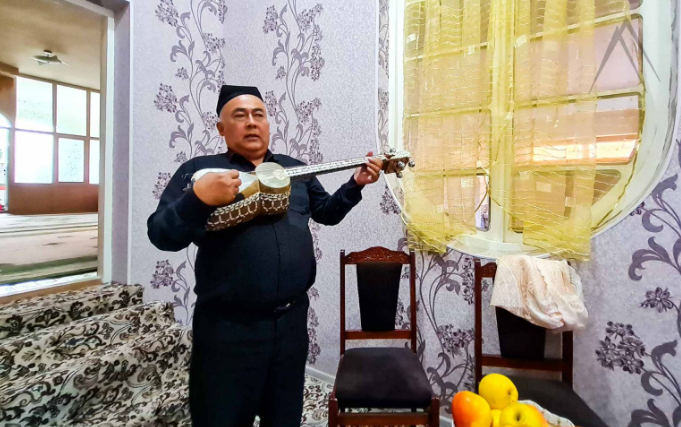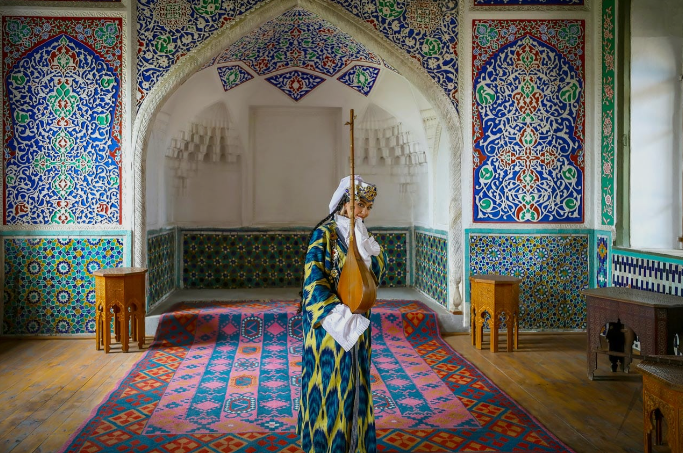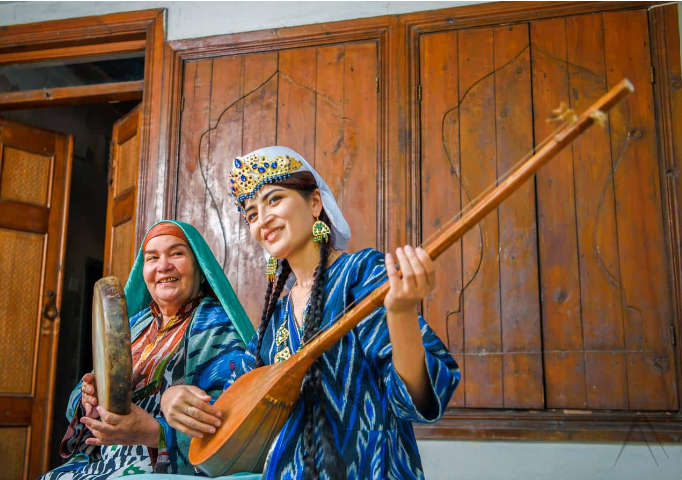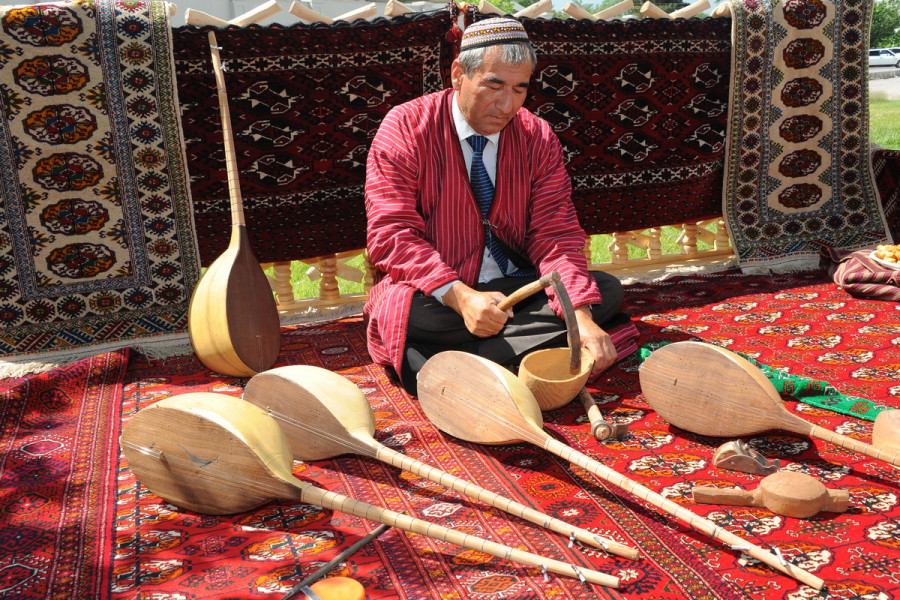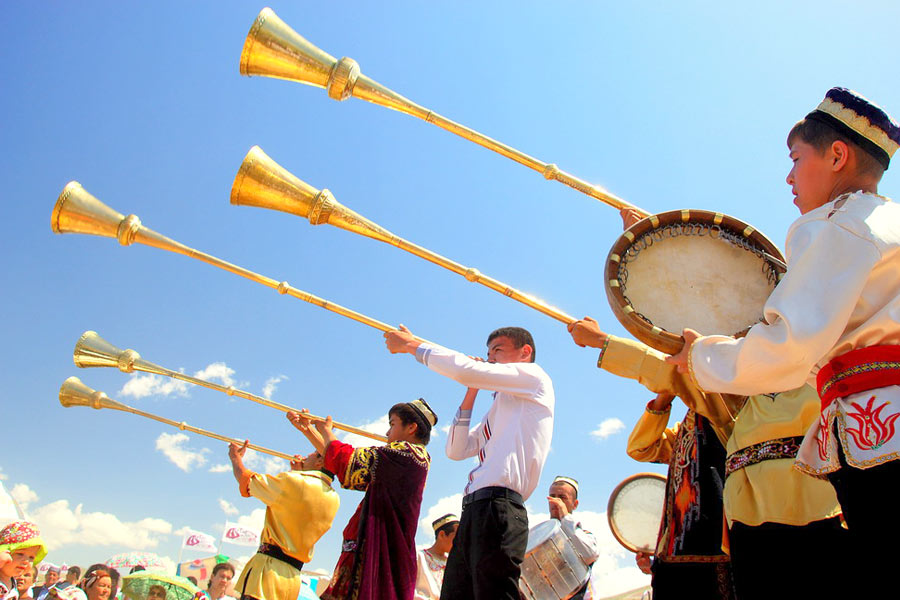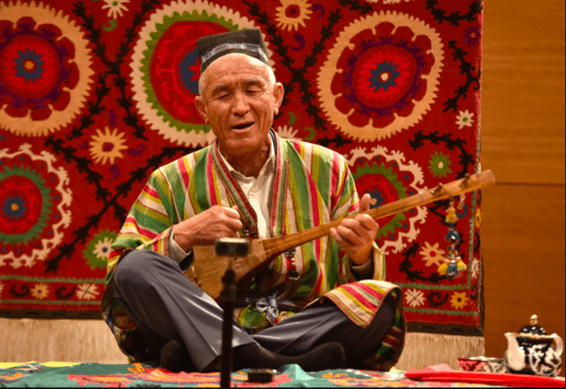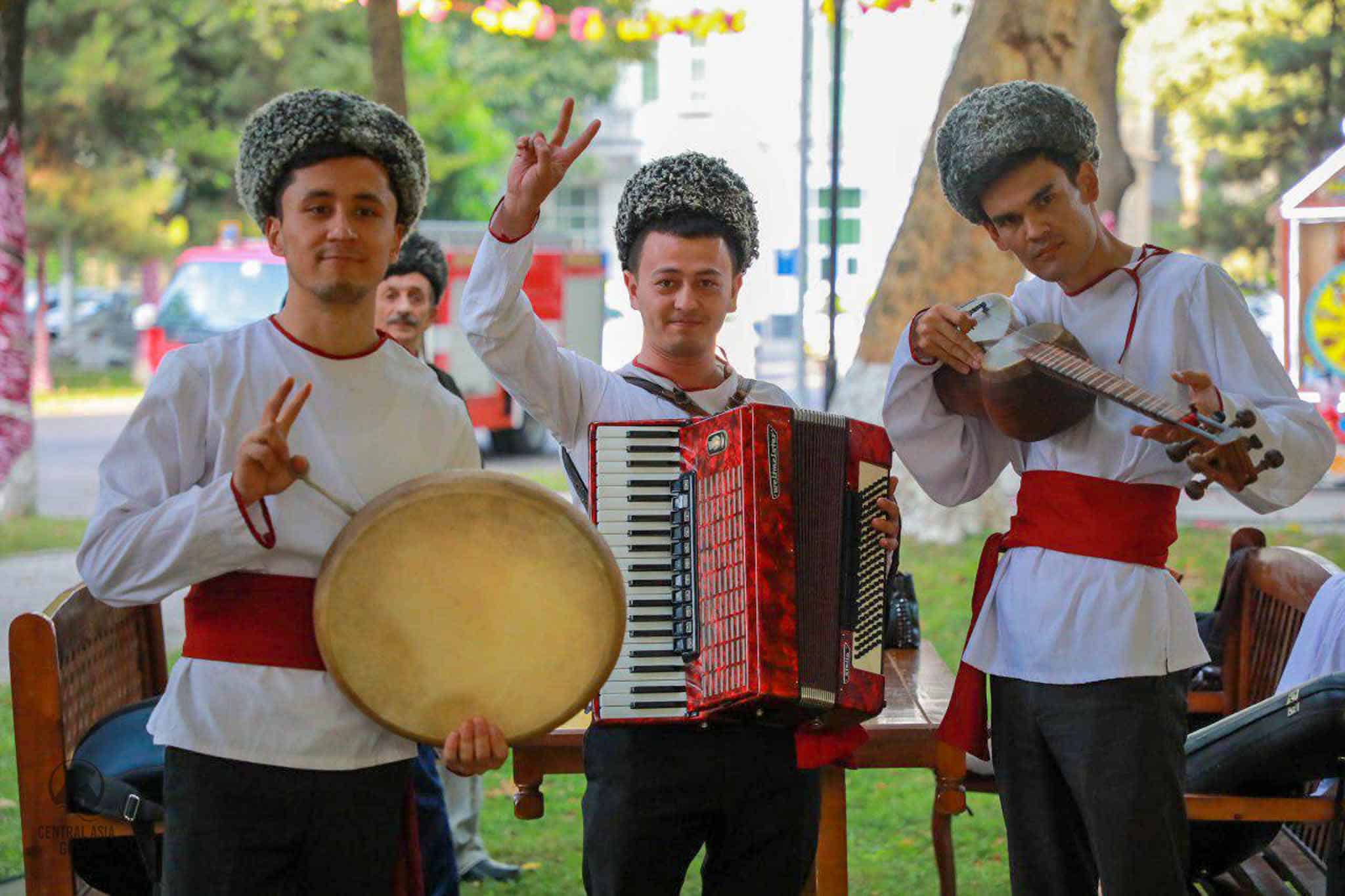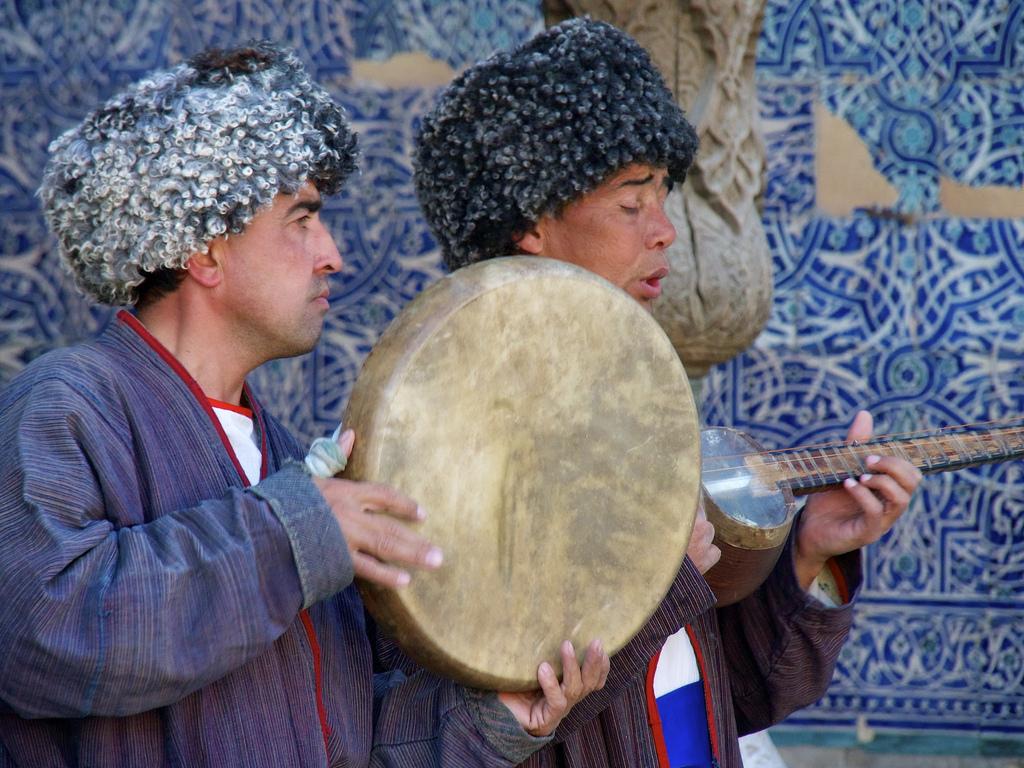
Uzbek Music
It has happened that from time immemorial Uzbek music and song are accompanied by all the customs and rituals during the significant events from birth to the end.
In many Uzbek families, traditional ritual music, in particular, songs, filled with a special meaning,
often originated from the era of pre-Islamic pagan culture, are carefully preserved and transferred.
The scientist Narshakhi in his work "History of Bukhara" noted the art of the Sogdians, who performed ancient ritual songs.
Instruments
1. Uzbek Dutor
The dutor is traditional long-necked, two-stringed lute found in Iran, Central Asia and South Asia.
Typical sizes of this oftenpear-shaped instrument range from one two meters. This instument has a warn and dulcet tone.
2. Uzbek Tanbut
The Uzbek tanbur has four metal strings that run over small loose bridge to a bit of wood at the adge of the body.
Tanbur is always played with wire plecrum on the index finger.
History of Uzbek music
Uzbek musical culture originated in ancient times. This is evidenced by the monuments of material culture found on the territory of Uzbekistan.
Uzbek music is closely connected with the musical culture of the whole Central Asia, but at the same time it is deeply original.
In the musical heritage of the Uzbek people, as well as many other peoples of the East, there are two large strata - folklore
(actually national arts) and the professional art of oral tradition (makoms and other products of developed form).
In Uzbek folk and professional music, there are four basic local styles - Khorezm, Bukhara-Samarkand, Fergana-Tashkent, Surkhandarya-Kashkadarya.
They were the result of ethnic community and similarity of social and economic living conditions of the population of certain regions (zones) of Uzbekistan in past centuries.
Zones differ from each other in some features of everyday life, certain song and instrumental genres, musical instruments.
For example, in the Bukhara and Khorezm zones makoms were widely used,
while in the Surkhandarya and Kashkadarya regions, plays for dombra were darious and worthy,
while in the Ferghana Valley there were various song genres with musical and poetic characteristics of the locality.
The genre of katta-ashula, or panys-ashula, is exclusively of Fergana and Tashkent.
Gallery
